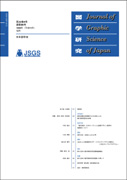All issues

Volume 56 (2022)
- Issue 2 Pages 3-
- Issue 1 Pages 3-
Volume 56, Issue 2
Displaying 1-4 of 4 articles from this issue
- |<
- <
- 1
- >
- >|
Reserch Paper
-
Nobuo TAKAHASHI, Mayu URATA, Mamoru ENDO, Takami YASUDA2022Volume 56Issue 2 Pages 3-10
Published: 2022
Released on J-STAGE: September 01, 2023
JOURNAL FREE ACCESSIn this study, in order to improve the visual consistency of CG live-action composites, we investigated a method for representing the bloom effect based on a simple measured camera point spread function (PSF). First, the camera-specific edge spread function (ESF) was obtained from the edge images taken, and the PSF was estimated from the line spread function (LSF) obtained. After that, we added the bloom effect by convolution of the CG image and PSF and evaluated the image quality. As a result, the PSF-based blooms were found to be effective in improving the visual consistency of CG live-action compositing, because the pixel values of the PSF-based blooms were almost identical to those of the camera-captured live-action blooms.View full abstractDownload PDF (1692K)
Research Materials
-
Sande GAO, Keijiro NAKASA, Kiyoko KAWASHIMA2022Volume 56Issue 2 Pages 11-15
Published: 2022
Released on J-STAGE: September 01, 2023
JOURNAL FREE ACCESSArgon ion sputter-etching of stainless steels forms fine cone-, column-, and grain-shaped protrusions. The gripping ability between the fine protrusions and soft and slippery sheet can be measured by experiment. However, to conduct a large number of experiments is time- and cost-consuming, whereas fundamental principles to predict the optimum gripping combinations between these protrusions and soft bodies have not been established. Thus, the implement of analysis and simulation of gripping behaviors of the fine protrusion are necessary. This paper presents an approach for creating 3D models of fine protrusions from their scanning electron microscope (SEM) images, which is an essential part of the analysis and simulation. The results of this research will be applied to the development of a software to find the optimum protrusion shapes and sizes depending on the properties and shapes of soft and slippery bodies.View full abstractDownload PDF (3370K)
Notes
-
Kumiko SHIINA2022Volume 56Issue 2 Pages 17-22
Published: 2022
Released on J-STAGE: September 01, 2023
JOURNAL FREE ACCESSUntil FY 2019, the classes of descriptive geometry based on hand drawing taught by the author were conducted face-to-face: real models were used to explain the basic concept of projections, the drawing process was demonstrated on the blackboard, and hand-drawing assignments were directly submitted to the lecturer. In FY 2020, the class moved online due to COVID-19. Still pictures and video shots were utilized as online teaching materials to explain the concept of projections and to demonstrate the drawing process. Scanned hand-drawing assignments were uploaded by students and comment sheets for correction and feedback were provided by the lecturer electronically. In FY 2021, the online class was conducted in much the same way as FY 2020. In both years, the term-end report, which corresponds to the conventional term-end exam, was conducted online.View full abstractDownload PDF (1710K) -
Shigeo HIRANO, Susumu KISE, Sozo SEKIGUCHI, Kazuya OKUSAKA, Tsutomu AR ...2022Volume 56Issue 2 Pages 23-27
Published: 2022
Released on J-STAGE: September 01, 2023
JOURNAL FREE ACCESSJapanese Industrial Standards (JIS) B 0001 (Technical drawings of mechanical engineering) have a high degree of convenience and usability. They were revised on 20 May 2019; however, inappropriate uses of drawing rules remain, including errors in terminology, misuse of drawing rules, and the existence of exceptions. Before revising the company standards for technical drawings of mechanical engineering according to the revised JIS B 0001, we searched the points that deviate from drawing rules and examined the revised JIS B 0001 to clarify basic standards. We report an example of revision of company standards for technical drawings of mechanical engineering on the basis of our examination.View full abstractDownload PDF (1124K)
- |<
- <
- 1
- >
- >|